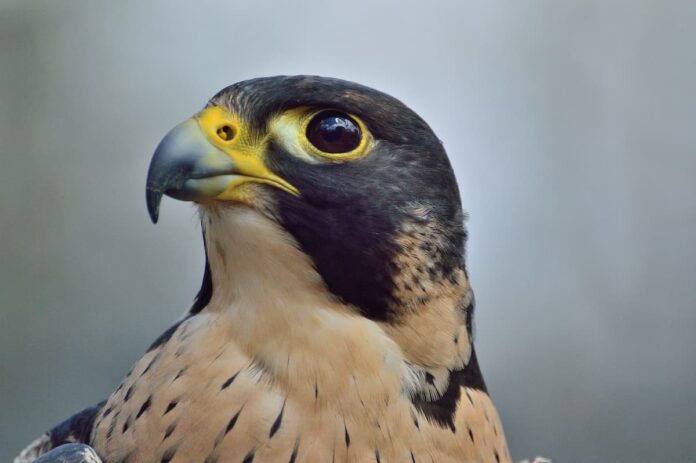You are going to look at some of the largest falcons among 40 species of this raptor today. Falcons are interesting birds of prey whose population is widely distributed on all continents except Antarctica. Instead of using talons like other raptors, all falcons use teeth on the side of their beaks as a killing weapon. I really find it interesting the fact that different falcon species have very different characteristics from one another. Each falcon in the list below all have fascinating traits, so let’s find out.
10Amur Falcon
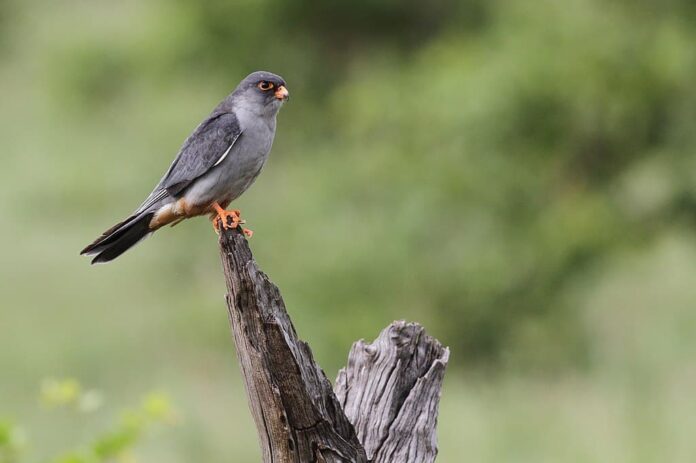
Size: 30 – 36 centimeters (11.8 – 14.1 inches)
Small yet resilient, the Amur falcons are great flyers who migrate a long distance every year. From May to June, these raptors leave their breeding grounds in China and Russia for southern Africa. During their flights, Amur falcons cross India and Sri Lanka to the Arabian Sea and other islands before reaching their destination. The journey is around 22,000 kilometers which is the longest sea crossing of any raptor in the world. As you might expect, these falcons also capture and feed during the flight while sometimes they also stop on the ground. Although their population is over one million individuals, they still face threats including habitat loss from grassland degradation and over-harvesting.
9Aplomado Falcon
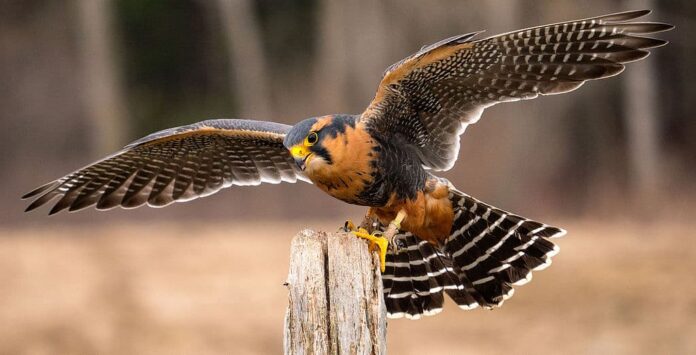
Size: 35 – 45 centimeters (14 – 18 inches)
Here you are looking at not only one of the largest falcons but also a colorful and stunning species. The first thing that attracts people’s attention is definitely the black and white stripes on their faces. Plus with the yellow cere, eye-ring, and feet, the Aplomado falcons look absolutely gorgeous. These falcons are the dwellers of coastal grasslands, deserts, and marshes in the southwestern United States to Central and South America. The open habitats that they prefer are full of insects and songbirds such as bats, butterflies, dragonflies, and even rodents.
The Aplomado falcons don’t build their own nests, instead, they use old stick nests from crows, magpies, ravens, and other raptors. In case needed, the couple would also evict the birds from their own nests right away. These falcons hunt in pairs, and their teamwork is amazing. One would flush the prey while the other grabs it, and sometimes the male passes the food to the female. Unlike the Amur falcons, the Aplomado falcons don’t migrate and they spend most of the year on their territory. These raptors are extra aggressive and territorial during nesting season, so be careful.
8Laggar Falcon
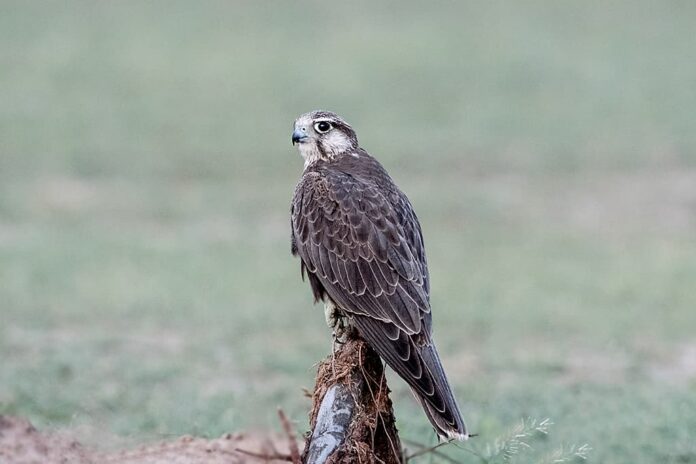
Size: 39 – 46 centimeters (15.3 – 18.1 inches)
Laggar falcons have large and slender bodies with long wings that almost reach their tail tips when perched. Not different from Aplomado falcons, this species also has very beautiful coloration and appearance. Plus with their white brows and rusty crowns, these raptors are magnificent to look at. When it comes to amazing parents, laggar falcons are definitely one of them. A pair of laggar falcons would take turns to hunt, feed, guard, and incubate their eggs during the nesting season.
Also, the male will eat after the female finished, and he always keeps watch for enemies and predators. Their predators are usually black kites, Indian spotted eagles, and short-toed snake eagles. If any birds get close to the nest, the falcons will chase them away to protect their eggs or their young. Their population keeps on declining due to the intensification of pesticides, and they are now considered Near Threatened.
7Prairie Falcon
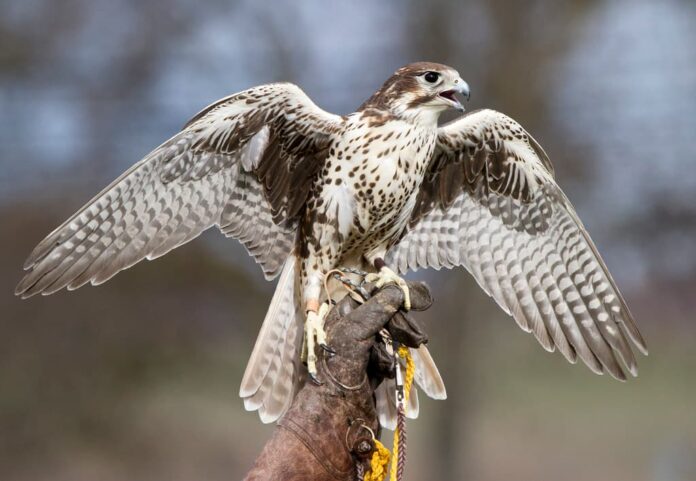
Size: 37 – 47 centimeters (14.5 – 18.5 inches)
Native to western North America, this is one of the largest falcons with a wingspan of up to 1 meter. These birds of prey are not only beautiful but also incredible hunters in harsh desert environments where they live in. As opportunistic hunters, the prairie falcons have several flight and hunting styles by using their speed. The fascinating thing about them is that they are powerful enough to take on prey 5 times larger than them. From birds to reptiles, these raptors hunt them all.
Just like most falcons, this species is also very aggressive and territorial when it comes to defending their nest sites. No matter what intentions other birds have, these falcons would attack if those birds step into their territory. Besides being serious hunters, big birds of prey also have a playful side. Prairie falcons have been seen to drop dried cow manure in midair and then dive to catch it. It is probably what they do when they are bored or to sharpen their flying skills.
6Brown Falcon
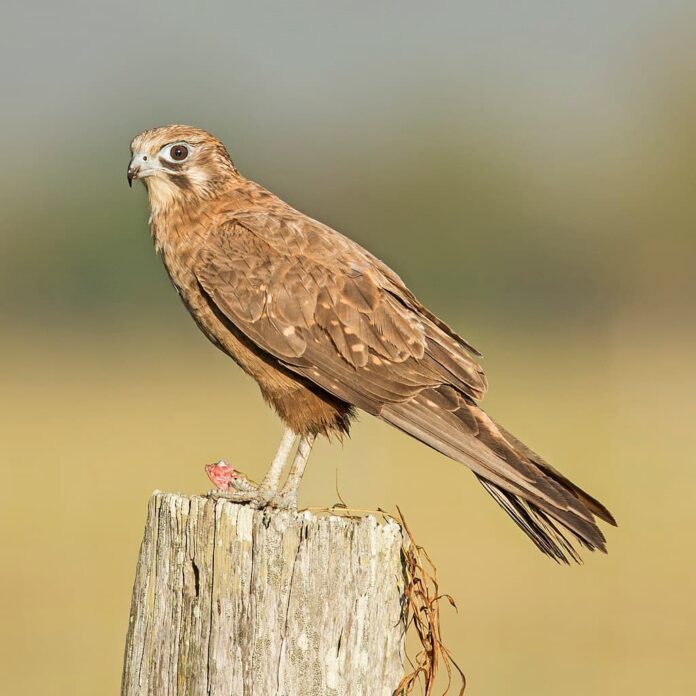
Size: 40 – 50 centimeters (15.7 – 19.6 inches)
With other names such as Chicken Hawk, Orange-Speckled Hawk, and more, brown hawks have different colors based on where they come from. The ones from tropical north Australia are very dark in color while those from central Australia are pale all over. These falcons are found in open, grassy, and unforested agricultural areas as well as savannas and scrub areas throughout Australia. Where they live, these falcons eat bugs, lizards, reptiles, and small birds, especially farm chickens. Brown falcons usually hunt alone by swooping and grasping the prey in their claws with a bite to the spine, killing the prey immediately. Because of their widespread population, brown falcons are often seen perching on power poles or flying over open habitats.
5Lanner Falcon
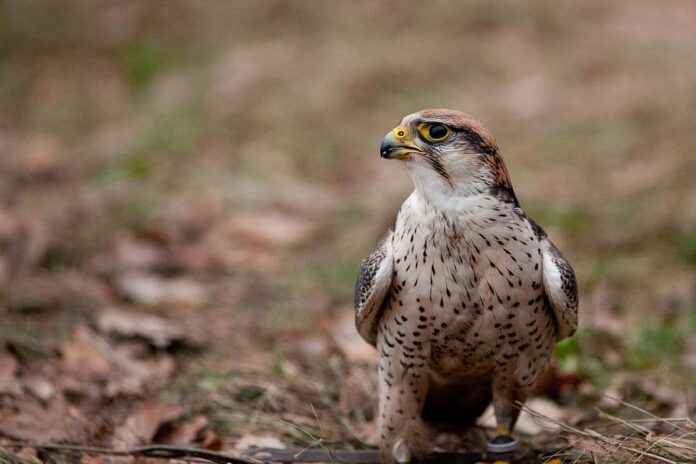
Size: 43 – 50 centimeters (17 – 20 inches)
Medium in size but very powerful, this bird of prey has quite a cool lifestyle. With the combination of great speed and keen eyesight, they can reach high speed when diving and they usually fly horizontally. Some falcons and other raptors are usually solitary, but lanner falcons live in pairs and hunt in flocks instead. As carnivores, these falcons prey on bats and birds as well as insects, reptiles, and small mammals.
The habitats of lanner falcons are in open country and the savannas, and these monogamous falcons mate for life. A female lays a clutch of 3 to 4 eggs, and both parents incubate the eggs for around 4 weeks. When the hatchlings mature, they sometimes hunt with their parents before becoming completely independent in about two months. Their population is at risk due to habitat loss and pesticide use.
4Black Falcon
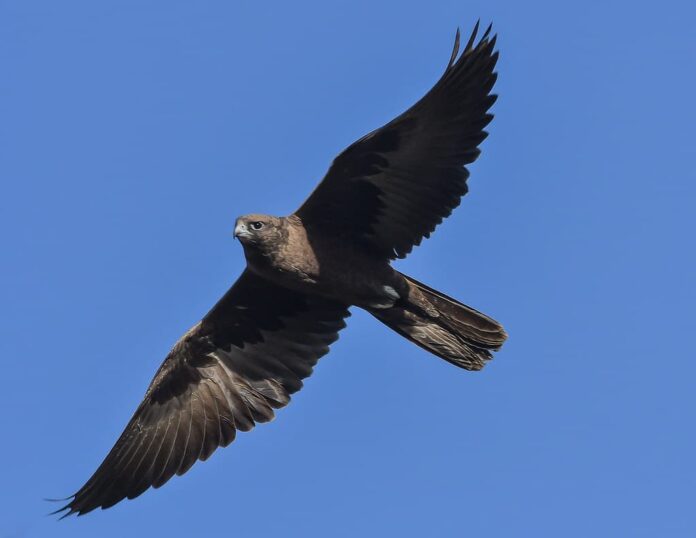
Size: 45 – 56 centimeters (17.7 – 22 inches)
The black falcons are both the largest falcons in Australia and one of the biggest falcons in the world. Endemic to Australia, they are found in all mainland states and territories of the continent except in densely forested areas. Just like the name suggests, this falcon species is black in color but dark brown is also common. The way they fly is quite fascinating due to the swift and powerful beats that they make in the air.
Falcons are incredible hunters, and so is this one. It simply swoops down and grasps the meal in its claws, and kills the prey with a bite to the spine. Even if they can hunt, black falcons also steal prey from other raptors sometimes. Black falcons feed on pretty much anything from birds and insects to reptiles and small mammals, even carrion. These raptors live along tree-lined watercourses, arid areas, isolated woodlands, and semiarid areas.
3Saker Falcon
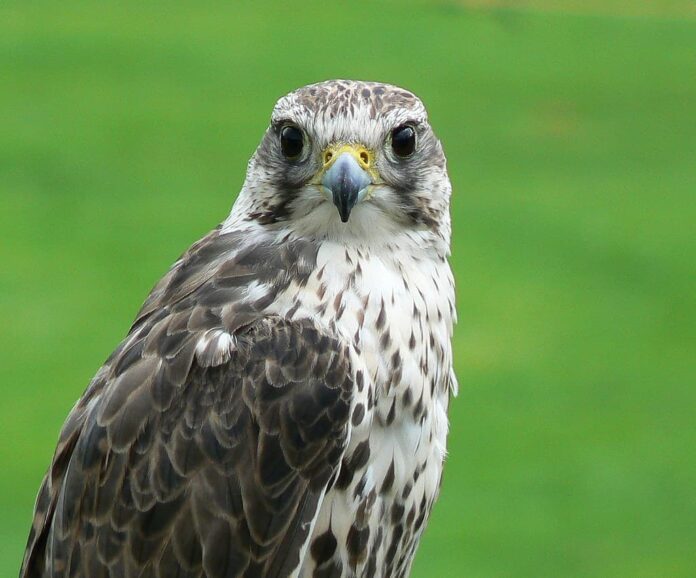
Size: 45 – 57 centimeters (18 – 22 inches)
Living in dry open grasslands, open hills, and semi-desert, saker falcons are one of the largest falcons and powerful birds of prey. Due to their large size, the wingspan of these raptors is up to 126 centimeters (50 inches) in length. They have a wide range of colors from dark brown and grey to almost white. Just like Amur falcons, saker falcons are migratory. They breed in the Palearctic region from Central Europe to Asia, and they migrate south to Africa, and Eastern and Southern Asia.
Saker falcons hunt close to the ground in horizontal pursuit, and they are very patient hunters. While looking for them, a saker falcon would sit on the perch or soar in the air for hours. Once the prey is spotted, it will immediately dive for the kill. The prey of these falcons are mainly birds and rodents, and their large feet help them to grab large prey easily. They are also monogamous, and the male would call loudly to attract a female’s attention during the breeding season. This species is not endangered due to a rapid population decline because of habit loss, and illegal hunting.
2Peregrine Falcon
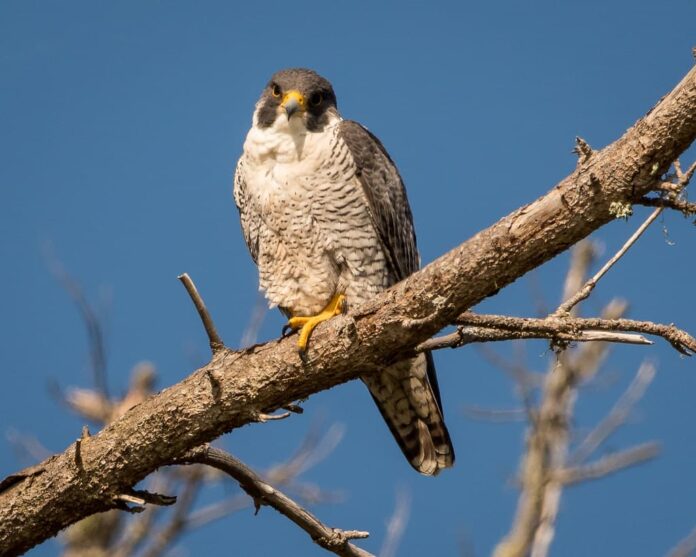
Length: 34 – 58 centimeters (13 – 23 inches)
Peregrine falcons are the second largest falcons in the world, and they are also among the fastest birds and animals. This raptor can reach up to 321 kph (200 mph) in a stoop in order to dive and catch its prey. Since they are formidable hunters who prey on birds, their hunting style is mid-flight. Peregrine means “wanderer”, and no doubt why they are widely distributed in every continent except Antarctica and some oceanic islands.
There are multiple subspecies of peregrine falcons, and most of them are migratory. The subspecies that nest on Arctic tundra and winter in South America will fly up to 15,500 miles per year. On top of that, they also have an incredible homing instinct that leads them back to their favored aeries. Even more interesting, some nesting sites have been used continuously for hundreds of years by generations of falcons. Although they were almost endangered in the 1950s, their population is perfectly safe now.
1Gyrfalcon
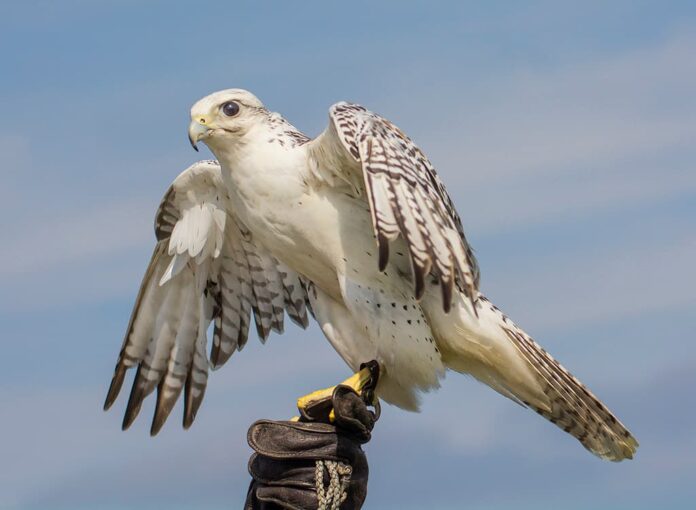
Length: 48 – 65 centimeters (19 – 26 inches)
This is the largest falcon in the world with many fascinating things to know about. Gyrfalcons (pronounced JER-falcon) are large, stocky, and powerful raptors with extraordinary appearances among other falcons. The plumage of these beautiful birds ranges from black and brown to silver and all-white. While most falcons above live in open habitats, this one nest in the arctic and subarctic regions instead. They are not Asia, Europe, Greenland, Iceland, and North America.
Thanks to their size and speed, these falcons hunt by using their fast flight, forcing their prey to the ground. As strict carnivores, they feed on birds like grouse, ptarmigan, and land mammals such as ground squirrels, lemmings, rabbits, etc. Gyrfalcons are monogamous and solitary birds, and they only interact with others in the breeding season. During that time, a family of gyrfalcons needs at least 2 pounds of food per day. Climate change is their main threat at the moment but they are considered the Least Concern.
Related Post: Largest Eagles With The Longest Wingspan

